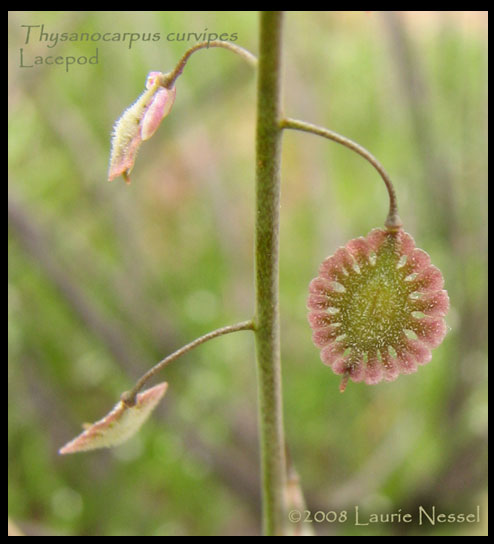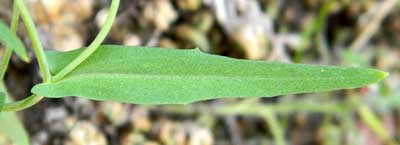Lacepod
Fringepod
Thysanocarpus curvipes

Photographed in Arizona spring 2008. Laurie as you might guess is an artist. She mostly works with glass, but is keen to see how plants work with cellulose and water. An evolutionary biologist can imagine the adaptive value that the pod morphology might provide this plant, but sometimes one should simply admire the delicate beauty in the Sonoran Desert and ponder.
ANNUAL: A frail, spindly annual mustard emerging in early spring and
withering away under the high heat of late spring. Herbaceous plants normally
less than ½ meter tall.
FRUIT: A flattened disc containing a single seed surrounded by a lacey
border.
LEAVES: Long-triangular leaves taper towards tip and enlarge towards
base which may partially clasp the stem. Leaves, alternate on stem, are larger
and more prominent around towards the base of the plant at ground level, with
fewer, smaller leaves along the upright flowering stalk. Leaf margins may show
a few shallow teeth.

RANGE: Frequent throughout the Sonoran Desert in Arizona and Mexico on
rocky slopes and wash banks, however, the plant will not be found except after
winter seasons with adequate rainfall.
FLOWERS: Small white flowers with the usual mustard morphology: 4
sepals, 4 petals and 4 + 2 (i.e. two sizes) stamens.
UNARMED. No spines or stickers.